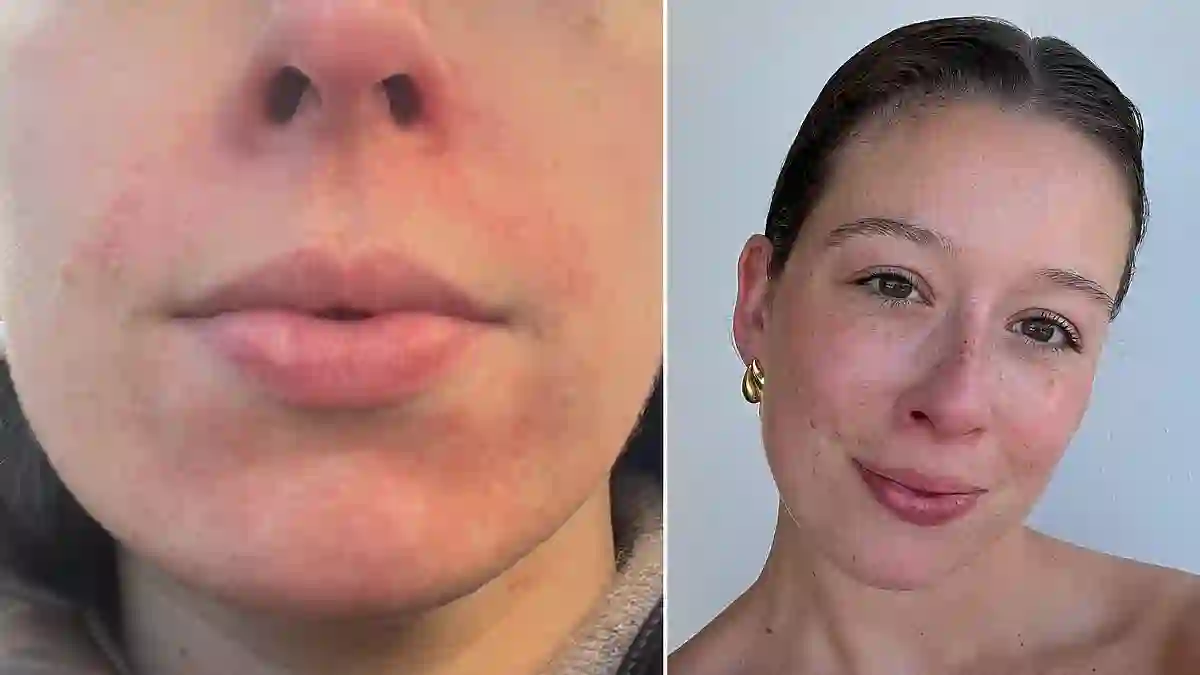Even the most careful skincare routines can hit a bump in the road. That’s exactly what happened to Charlotte Vossen, a beauty editor who has always been meticulous about her skincare.
Having battled acne as a teenager, she’s extremely cautious with her products—avoiding fragrances, heavy oils, and anything that might clog her pores.
Her routine includes double cleansing at night, weekly chemical exfoliation, and daily vitamin C serum with SPF 50+.
But even someone with her experience isn’t immune to a skincare mishap.
The Travel-Sized Cleansing Balm That Backfired
Last December, while in Edinburgh for a weekend trip, Charlotte packed a travel-sized container of a well-known cleansing balm, thinking it would be convenient.
The moment she massaged it onto her face, her skin erupted in a red, bumpy rash around her mouth and nose.
Despite immediately rinsing it off, the damage was done.
Back in London, she contacted her GP via a phone consultation, sending photos of her skin.
The diagnosis? Perioral dermatitis. She was prescribed a topical cream, Trimovate, and told the rash should clear in about a week.
When Treatment Fails
Unfortunately, the rash didn’t improve—in fact, it worsened.
Charlotte booked an in-person appointment with a different GP, but the visit was disheartening.
The doctor barely examined her, dismissed her concerns, and even questioned why she was upset.
Left frustrated, she requested a referral to a dermatologist and was prescribed Benzoyl Peroxide instead.
While the treatment slightly reduced the bumps, her skin remained red, stinging, and now flaking.
Even gentle skincare routines weren’t helping, and months passed with no word from the NHS about her dermatology appointment.
Turning to TikTok for Solutions
Feeling defeated, Charlotte turned to TikTok, scrolling through videos of other women experiencing perioral dermatitis.
Many shared remedies, and she decided to try two items from Amazon: a bottle of hypochlorous acid, a gentle antimicrobial and anti-inflammatory face spray, and disposable face towels to reduce irritation.
At the same time, she booked a private appointment with a female GP.
This time, the advice was clear: stop using Benzoyl Peroxide immediately and start a three-month course of oral Doxycycline.
Recovery and Lessons Learned
The new treatment worked. Over the Christmas break, the rash cleared, though some redness lingered around her nose for a few more months.
Thankfully, a bit of concealer covered the remaining marks, and she gradually reintroduced some favorite active ingredients like vitamin C and niacinamide without flare-ups. Retinol is still on hold until after summer.
Charlotte reflected on her experience: it took three months, three different GPs, and multiple treatments—two of which made her skin worse—before she found relief.
Meanwhile, the NHS dermatology appointment she had requested arrived nearly 11 months later, only to be ultimately unnecessary.
Advice for Anyone Struggling with Skin Conditions
Charlotte’s journey highlights a common issue: GPs can sometimes dismiss skin conditions, leaving patients frustrated and untreated.
Her advice? Emphasize both the physical and mental impact of your symptoms.
And if things persist, consider a private dermatologist appointment—it may be costly, but it can save months of stress and ineffective treatments.
Skincare mishaps happen, even to experts—but persistence, research, and the right professional help can make all the difference.
